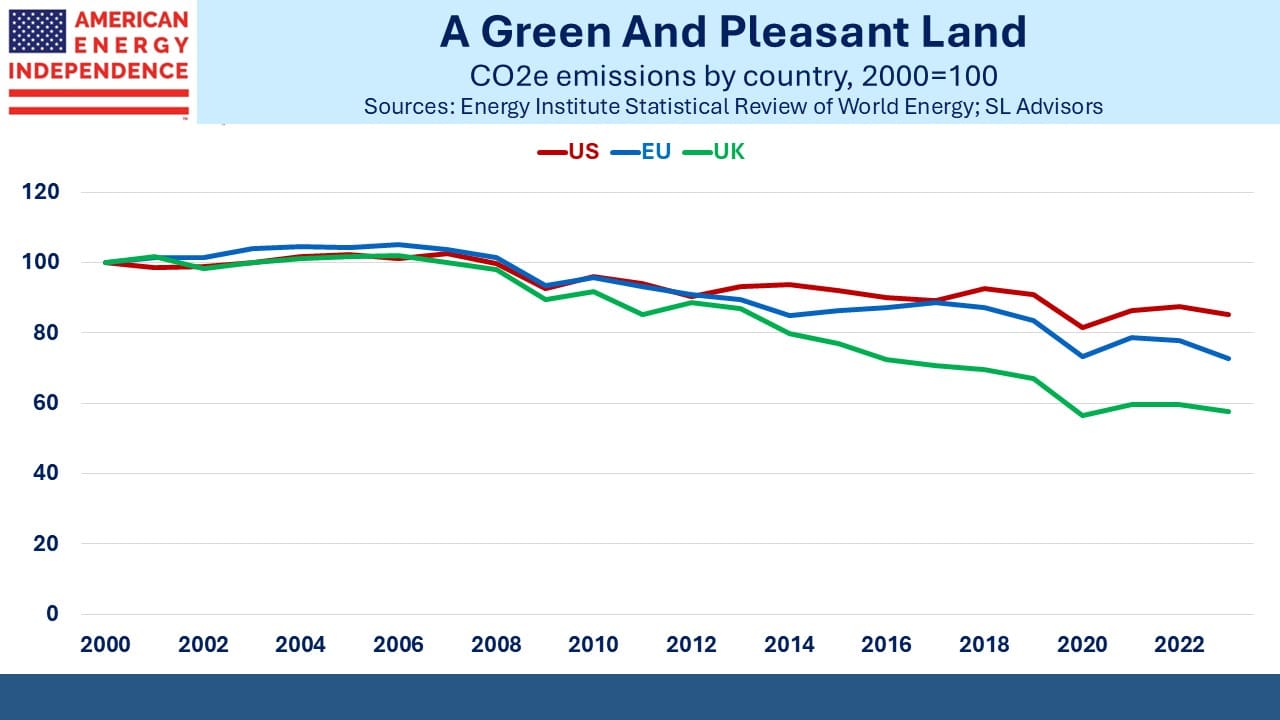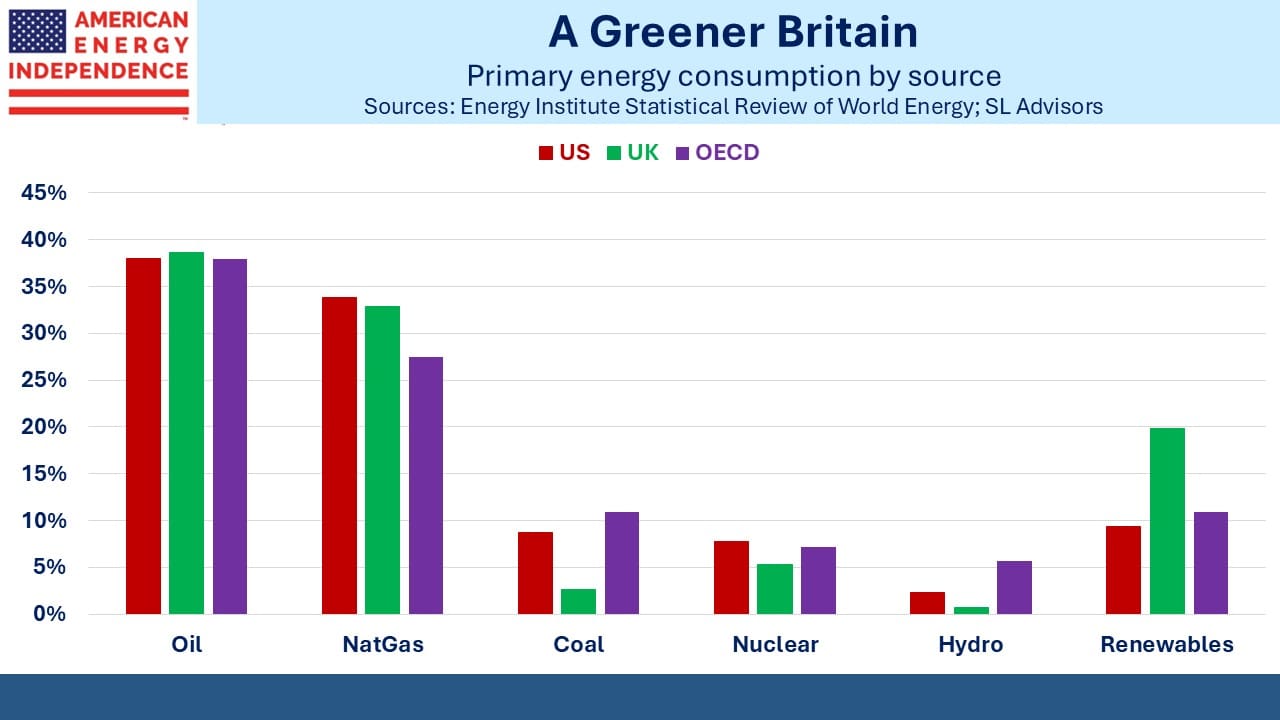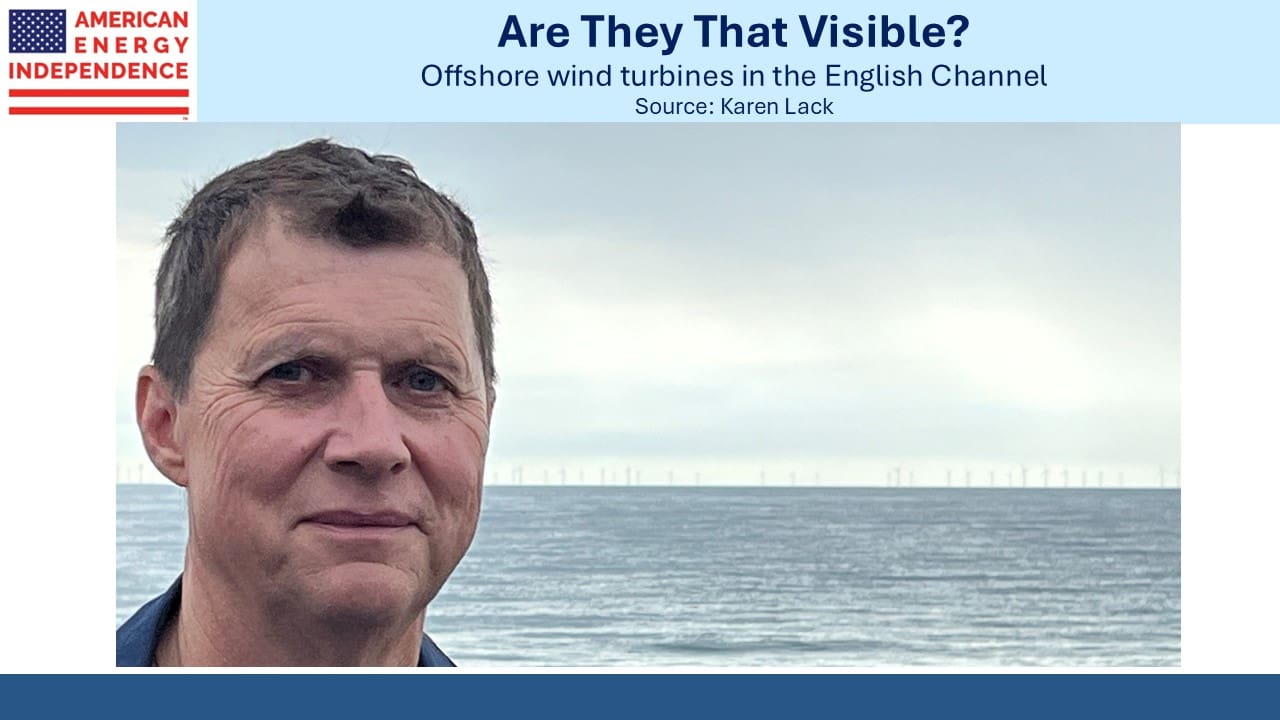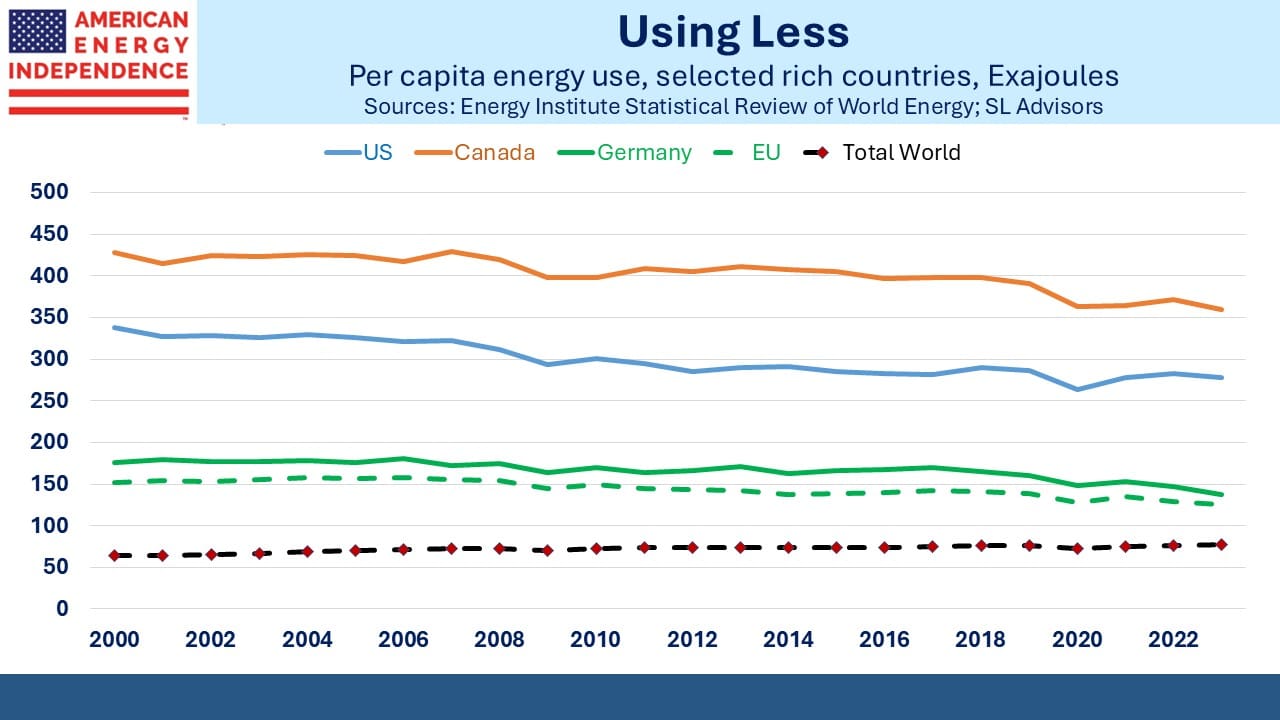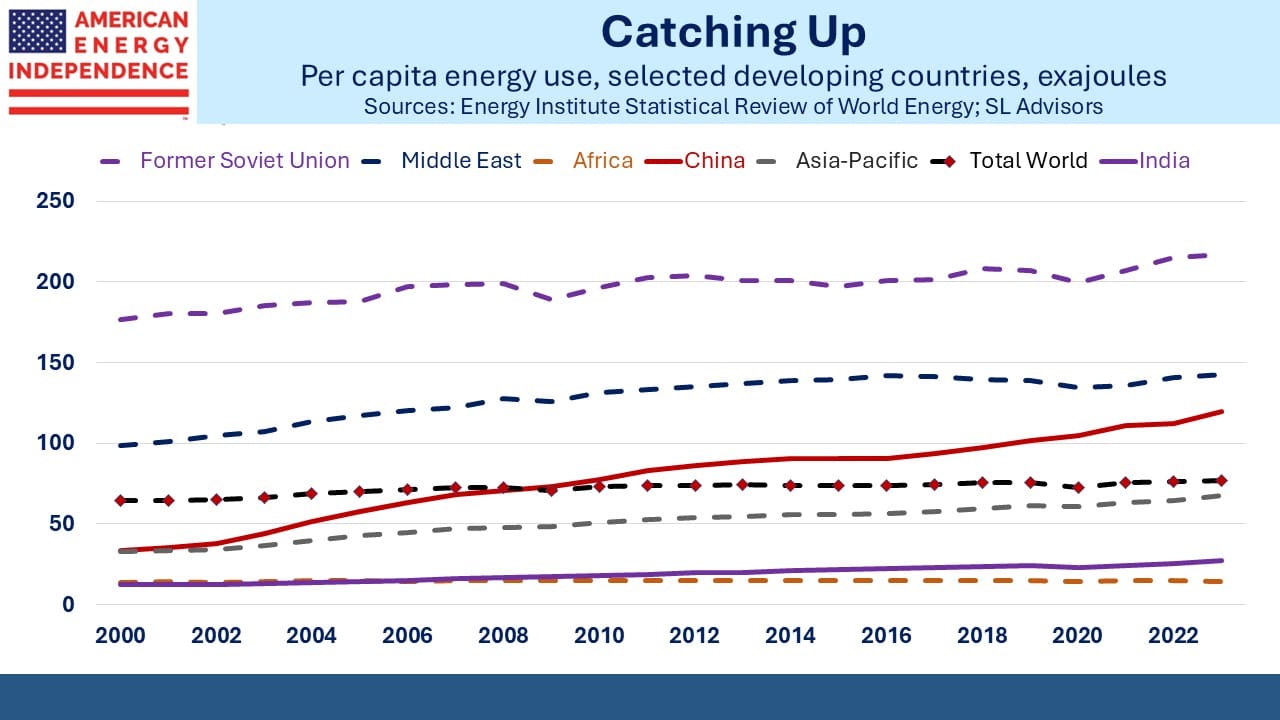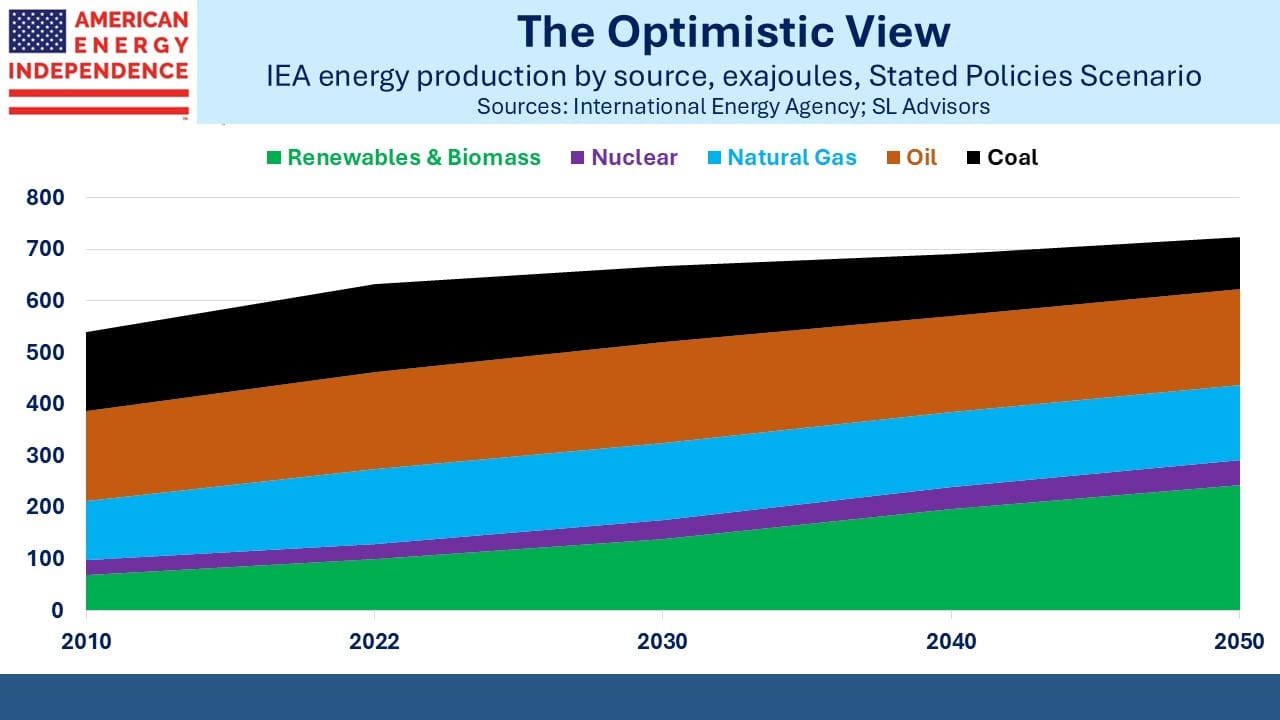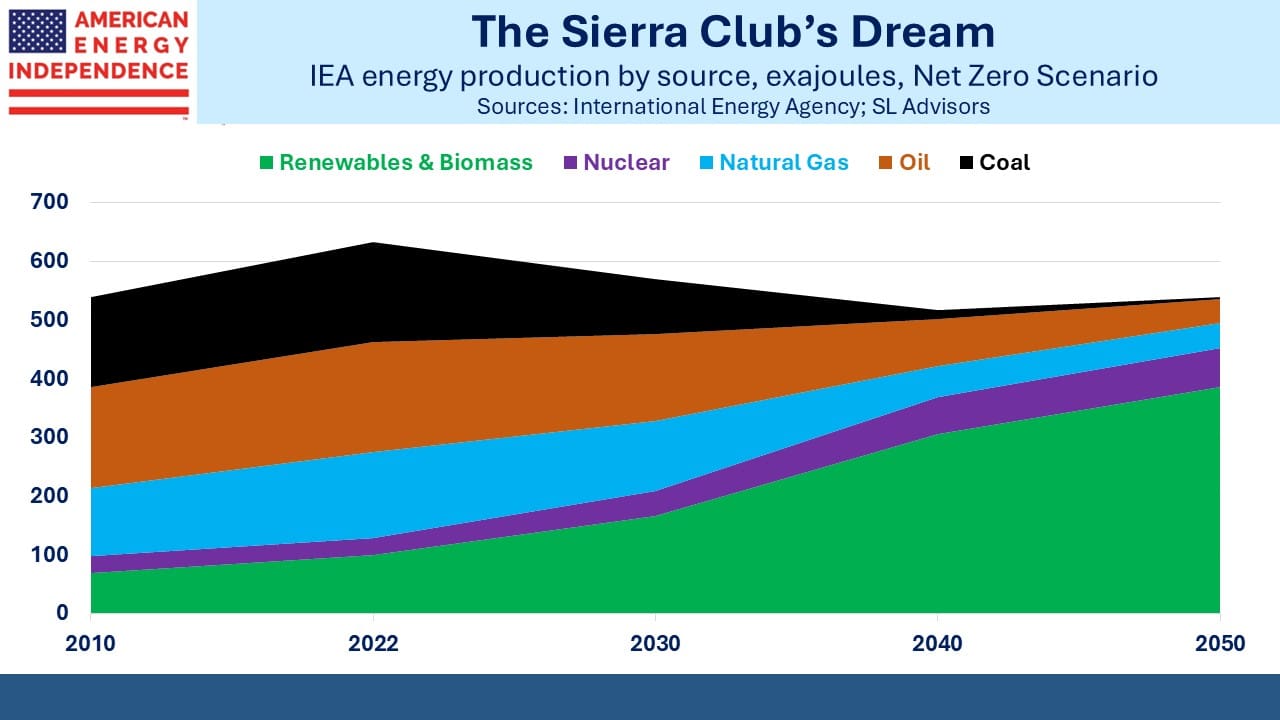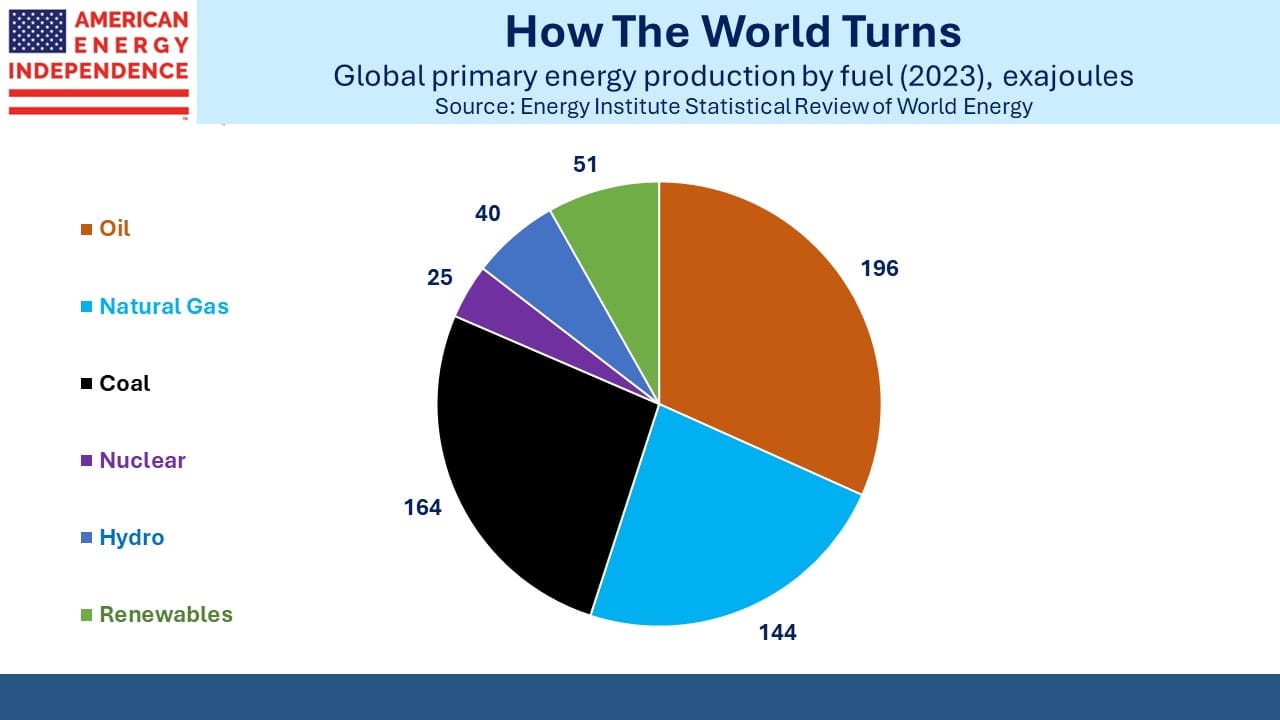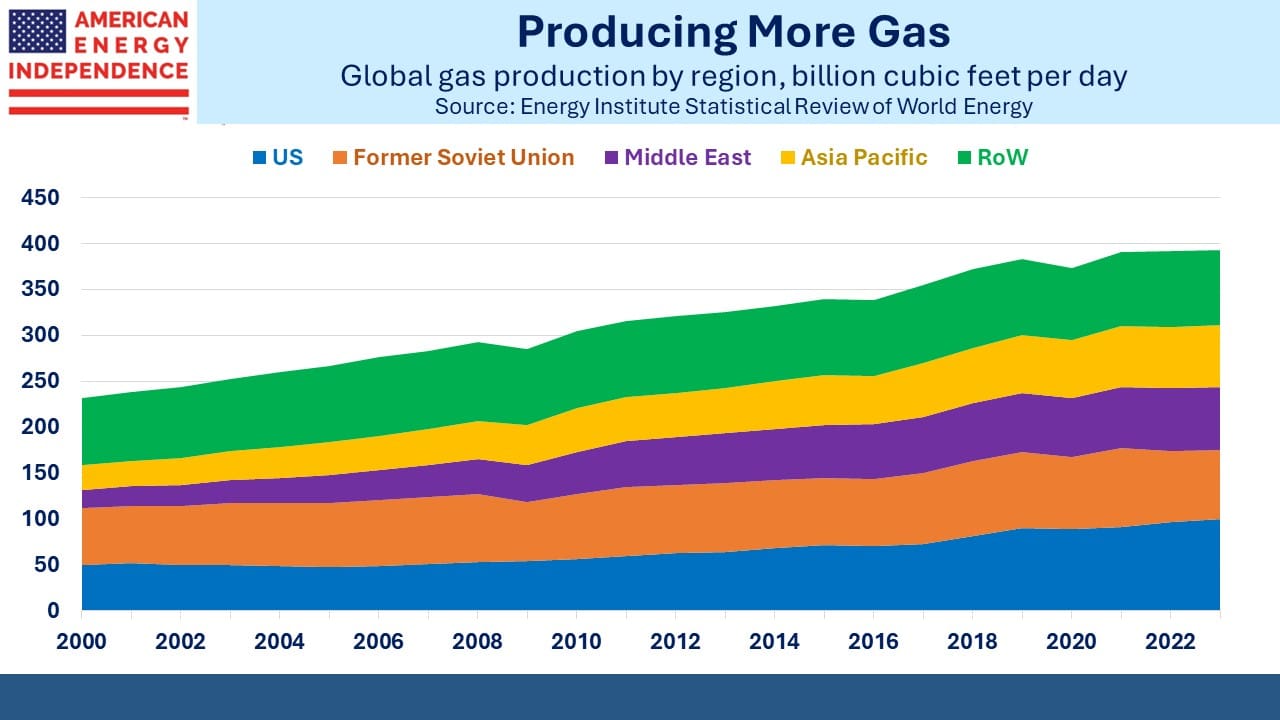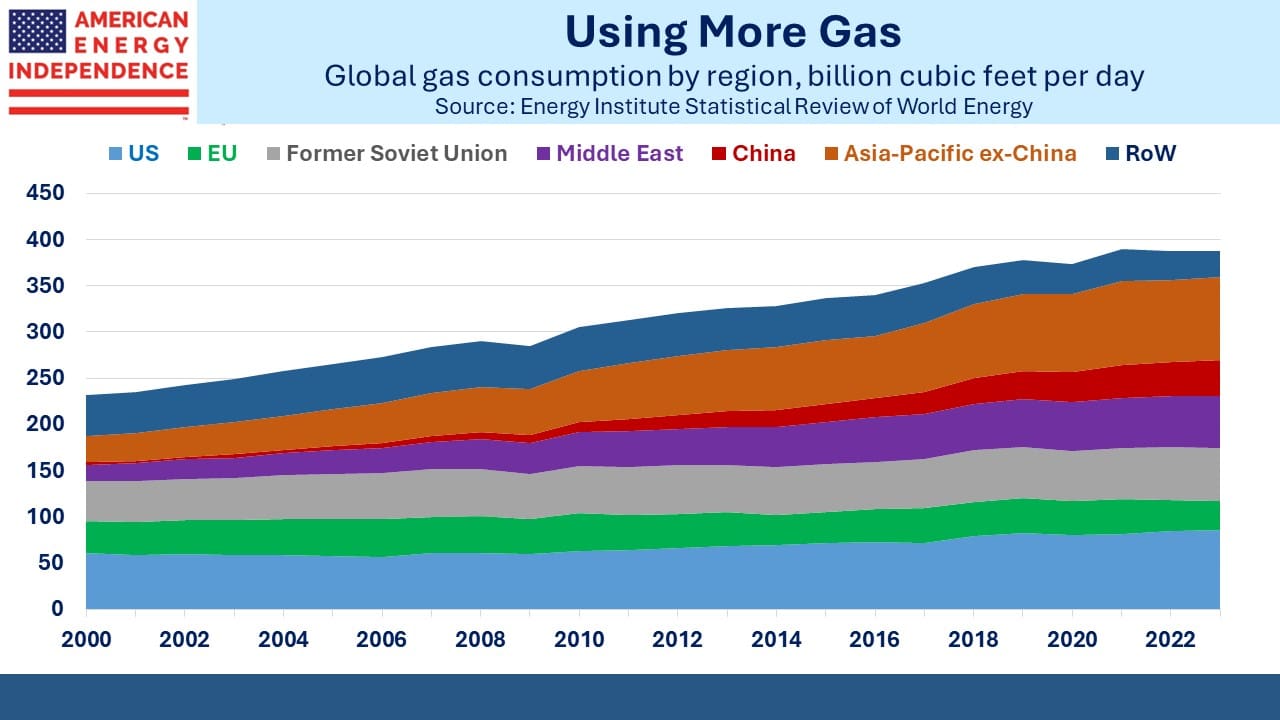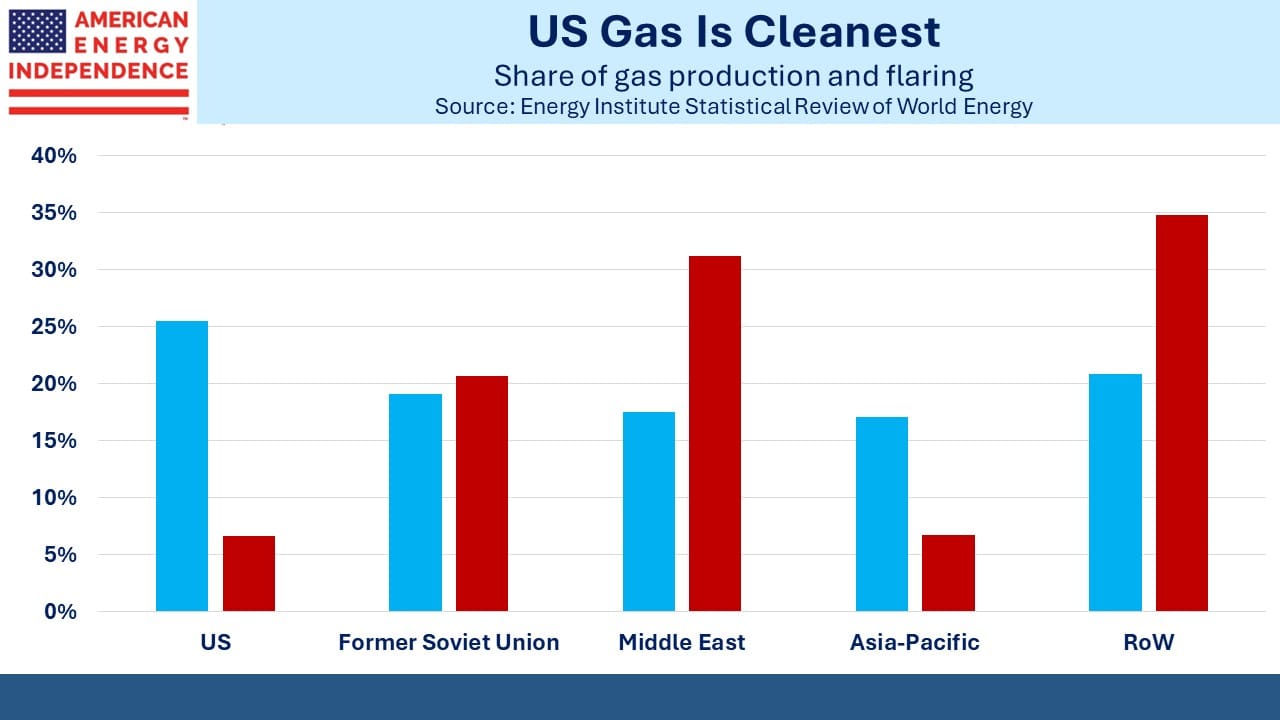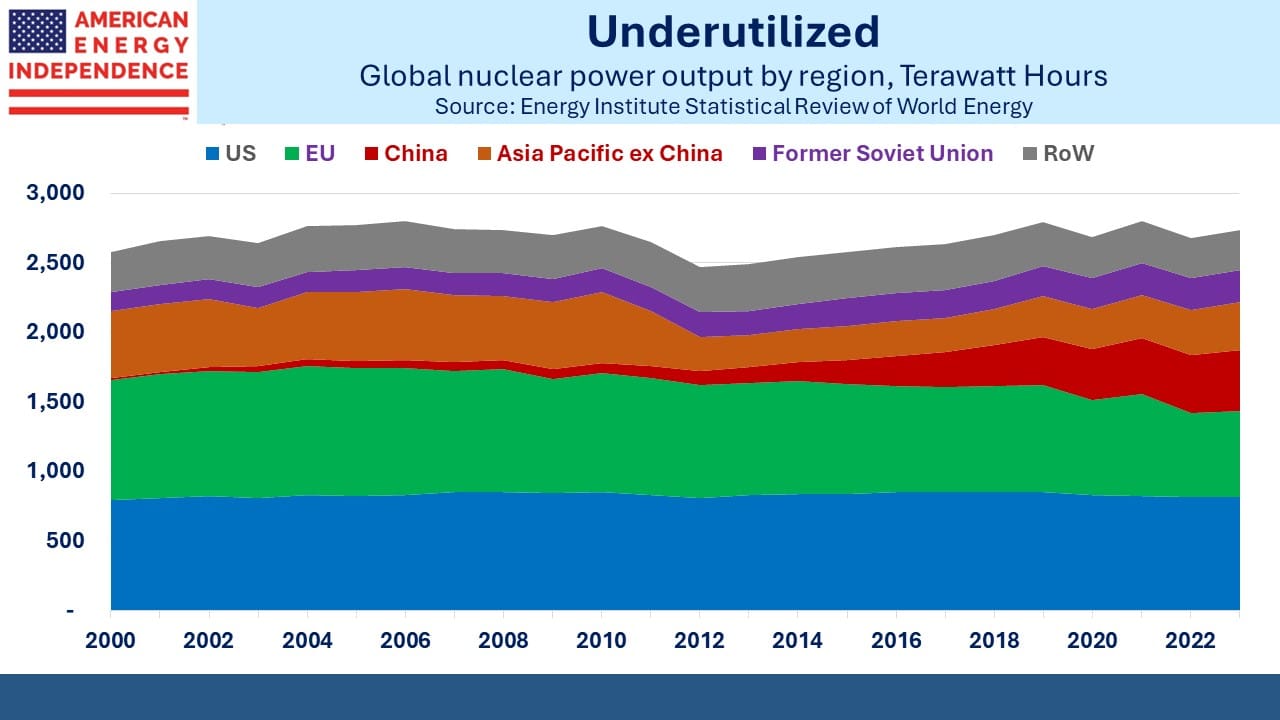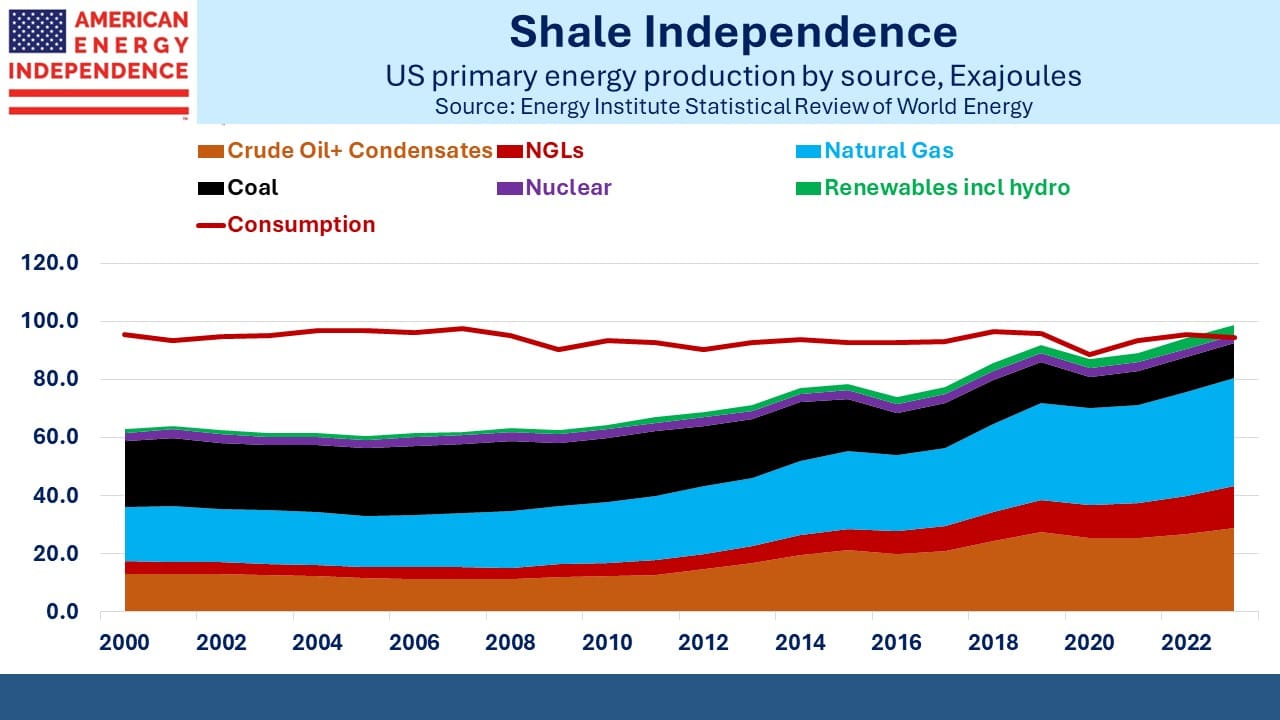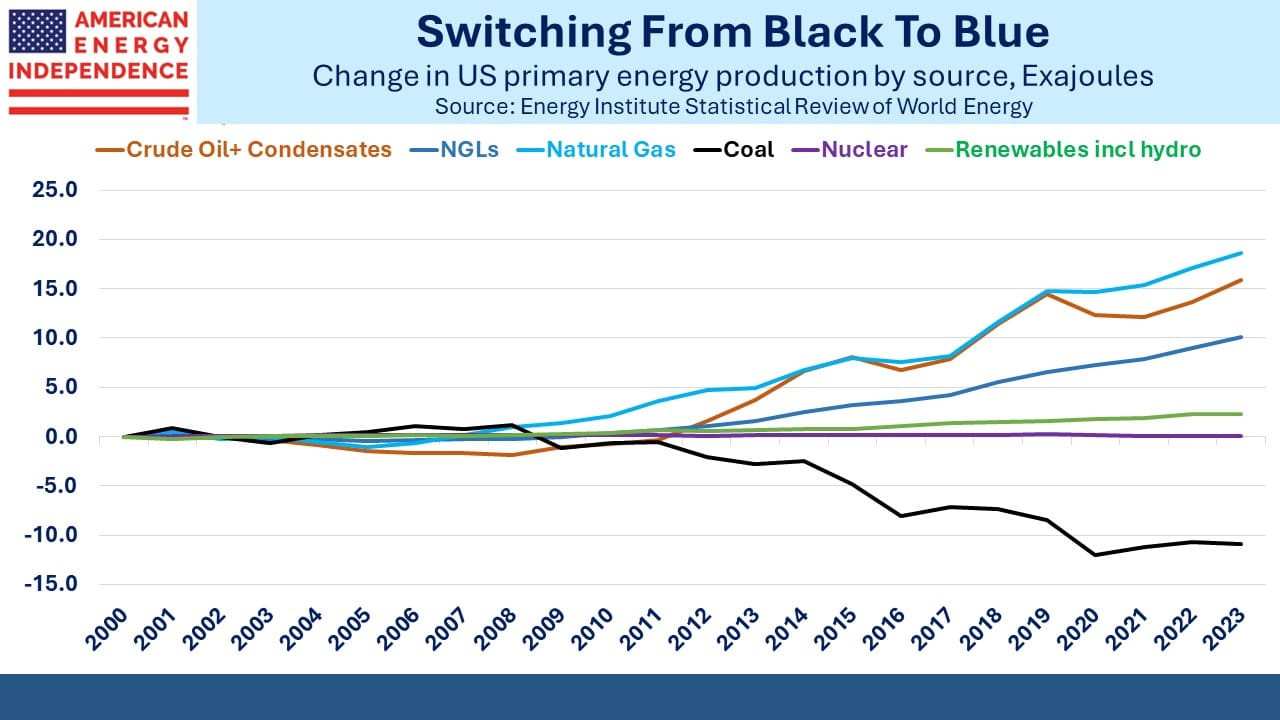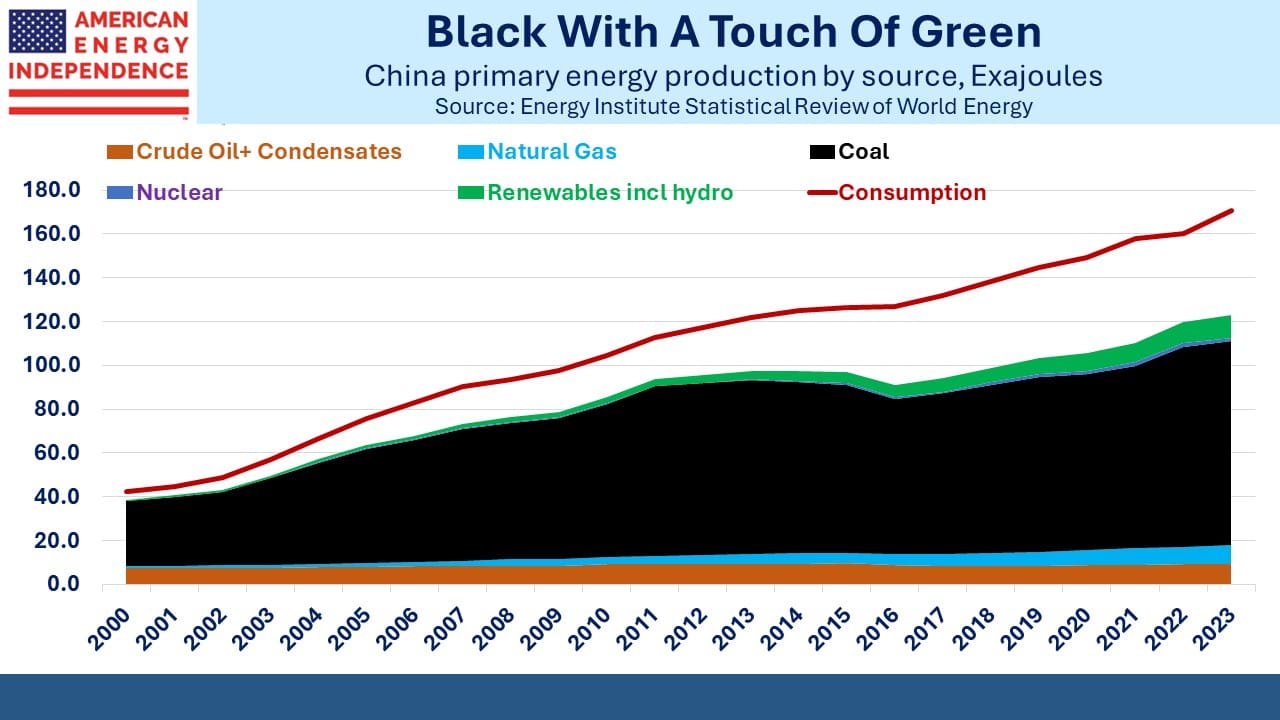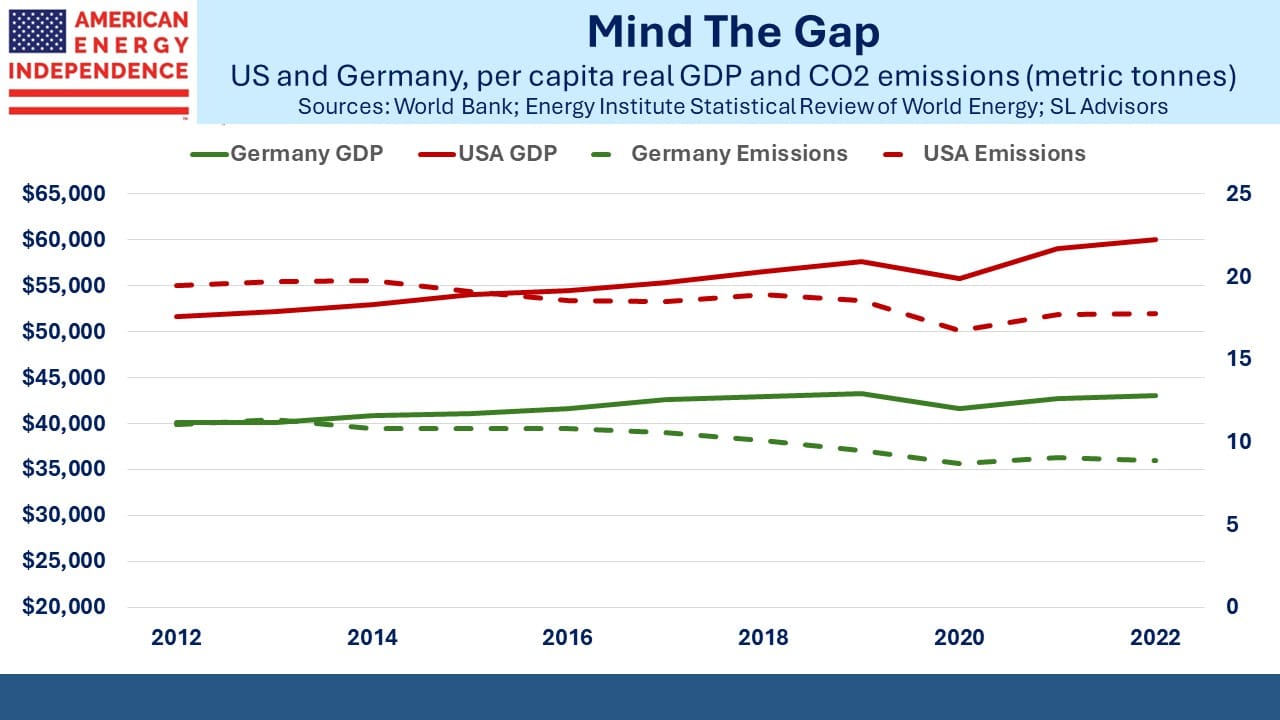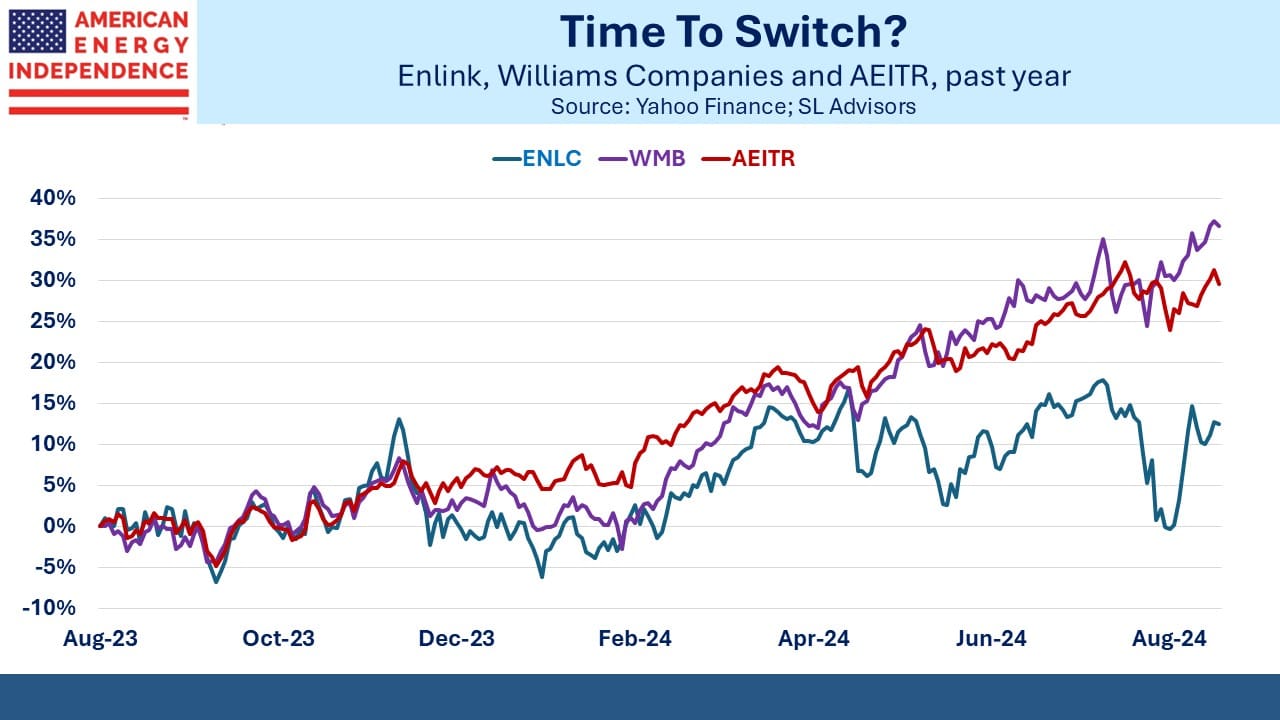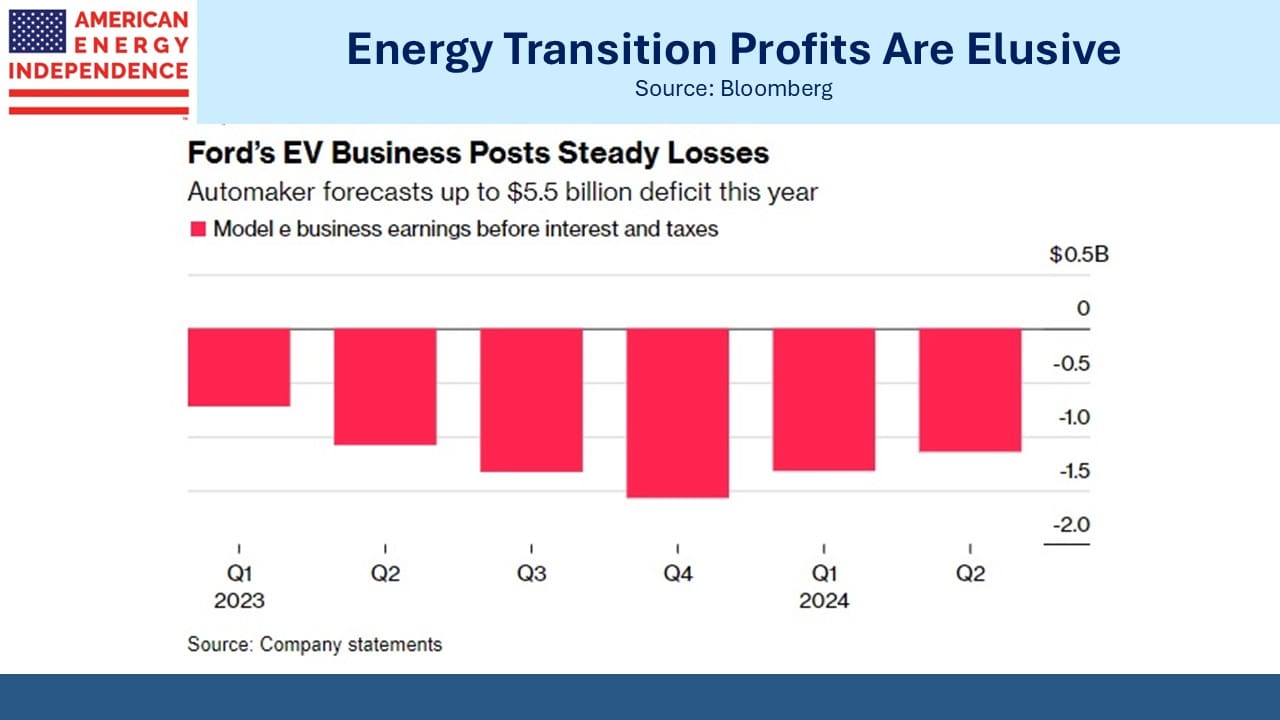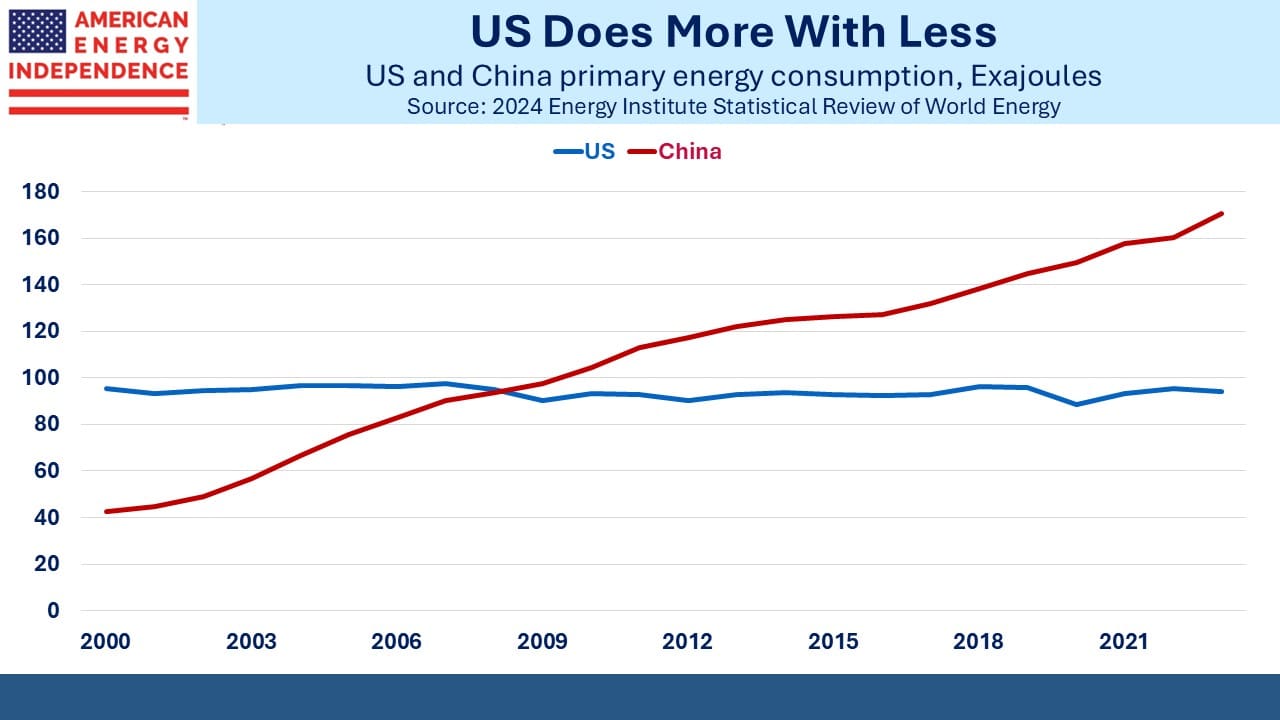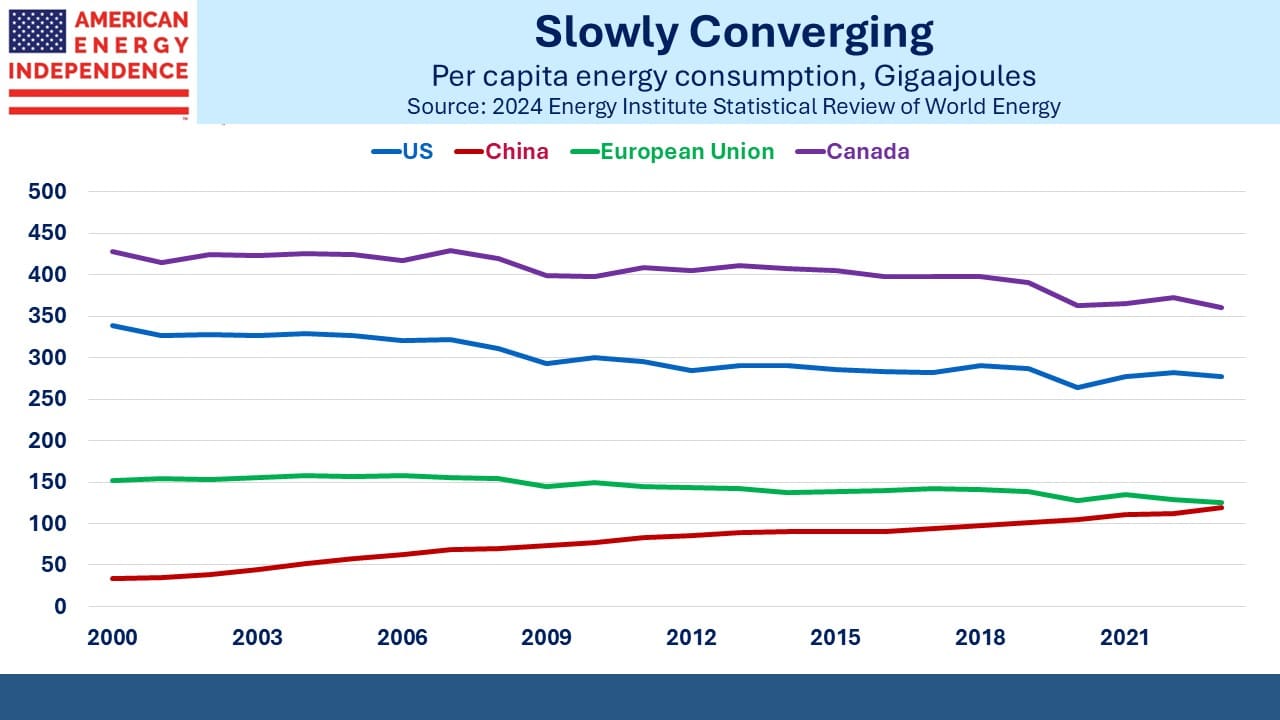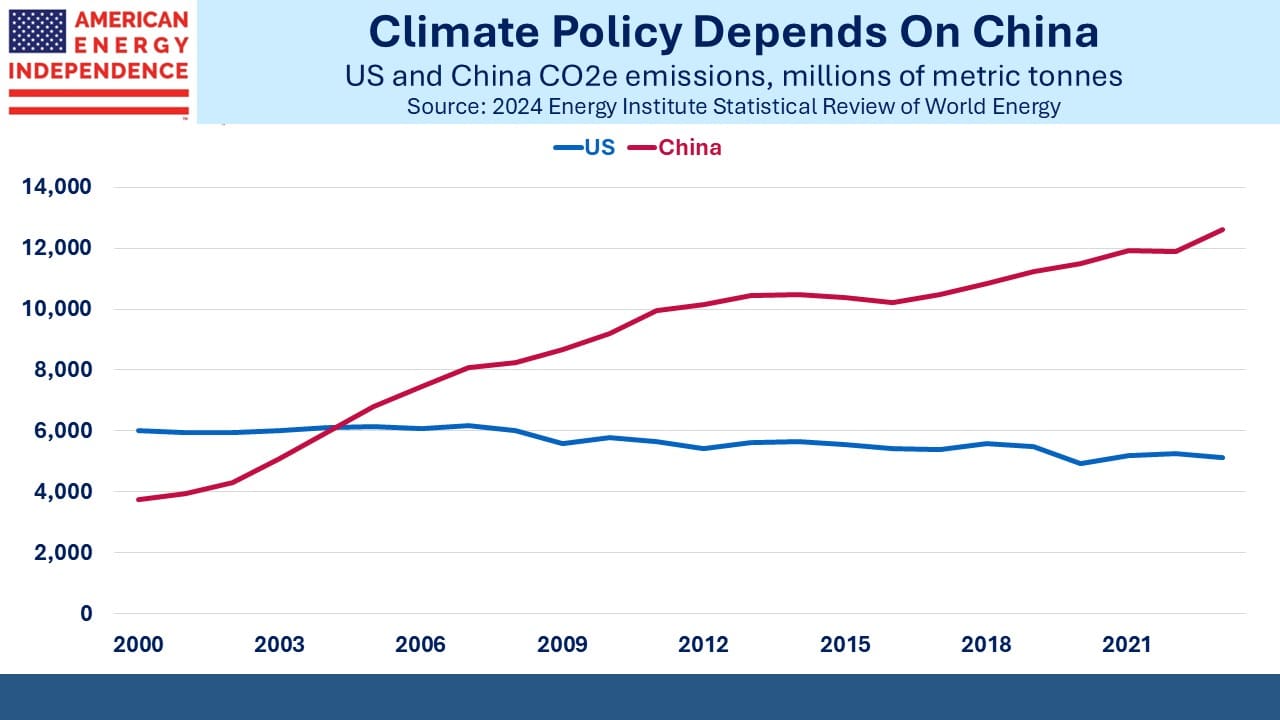Britain’s Energy Transition

I spent two weeks recently touring southern England with my wife. It’s 42 years since I moved to the US, and I appreciate my old country more now than as a teenager itching to escape to the new world. We did some sightseeing and saw old friends. As we traveled around, the British approach to the energy transition was never far from my mind.
Despite voting for Brexit, which was a populist, right wing decision, Britain is a politically liberal country like much of Europe. Reducing greenhouse gas emissions to limit global warming is not a contentious issue. The Conservatives, who were in power from 2010 until an ignominious electoral drubbing in July, passed a “Net Zero” law in 2019 mandating zero emissions by 2050.
The UK has been surprisingly successful in heading towards this goal. Emissions are down 44% from their 2006 peak, meaningfully ahead of the EU whose equivalent reduction is 31%. Germany may be the self-styled leader of the “energiewende” but Britain has been quietly getting it done.
In 1900 coal provided 95% of Britain’s electricity. As recently as 2012 it was still 40%. The last coal-burning power plant will be decommissioned by the end of this year. They’re also planning to add more nuclear.
Renewables provide 20% of the UK’s primary energy, substantially ahead of the US (9%) and the OECD (11%). Last year wind provided 29% of their electricity, just behind natural gas at 32%. What the National Grid calls “zero carbon energy” (mis-named since manufacturing wind turbines relies on traditional energy) regularly produces most of their electricity and was 51% last year.
The North Sea is a reliably windy place, and offshore wind turbines are far less controversial than in the US. We saw them from numerous spots while traveling along the south coast. Windpower suffers from cost and intermittency, but the view of turbines miles out to sea doesn’t strike this blogger as particularly offensive.
US windpower is overwhelmingly onshore. Offshore has been plagued with cost over-runs and cancelations. Coastal residents complain about the view, and a 300-foot fiberglass blade recently shattered near Martha’s Vineyard, with jagged pieces washing up on the beach. Voters along the New Jersey shore, politically red in a very blue state, are outraged at plans for offshore wind (see Windpower Faces A Tempest).
In the UK you’re never far from a wind turbine.
Energy costs more in Britain. Electricity is around $0.40 per kilowatt hour, more than 2X the US. People commonly shut the lights off when leaving a room. One hotel we stayed at required your room key inserted in a slot for the lights to stay on, preventing guests from going out and leaving the lights on.
Gasoline (petrol to Brits) costs around twice as much as the US because of higher taxes. But the cars are smaller and the roads narrower. Even though I learned to drive there, it was over 40 years ago. Driving through the English countryside, it felt like small cars were zipping around impossibly narrow lanes. But our 800 miles of driving cost £100 ($133), just under $0.17 per mile and similar to the average for US drivers.
British drivers grumble about the cost of petrol (and the traffic) but unlike the US it’s not a political issue. Everyone knows the British government has no influence over oil prices.
Americans drive more miles per year than most countries, which is why gasoline prices get people so worked up. Moreover, Britain’s more extensive public transport system generally gets you around faster than in the US. Taking a painfully slow NJ Transit train into New York compares unfavorably with the faster commuter trains servicing London.
In Britain, it’s household heating bills that earn the public’s ire.
Natural gas is widely used, and Russia’s invasion of Ukraine boosted winter heating bills. For a couple of years households were protected from the full impact of higher gas prices, through government caps, but that costly program has ended. During our trip the new Labor government’s plan to cancel pensioners’ annual heating rebate was a leading news story.
Britain has a good energy transition story to tell. But how do people feel about making a considerable effort while developing economies led by China overwhelm their efforts? Most haven’t given it much thought, and those that have shrug and say it’s important to “do your bit.”
Young people care more. My nephew, who’s a data scientist, even considers the energy required of a data center in constructing the form of AI queries he submits.
Unquestioning fealty to green energy is common among liberals. If climate change is such an existential threat, why don’t their governments make it a priority in dealings with China? I think it’s because the politics of climate change aren’t driven by solving the problem, but rather by imposing costly and inconvenient local measures that appear effective but are globally irrelevant.
Britain is ahead of its peers in reducing emissions, but the worldwide effect is inconsequential. The 44% reduction they’ve achieved since 2006 is only 0.6% of the total. For reference, the UK is around 3% of global GDP.
Climate extremists are driving policy in the UK as elsewhere and are missing the big picture. At its worst it’s wokeness trying to impose guilt on everyone simply for being here, on Planet Earth, living.
We have three have funds that seek to profit from this environment:
Energy Mutual Fund Energy ETF Real Assets Fund

